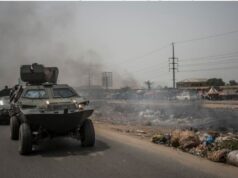Shinon Meeras An Icon of Indian Army’s conservation efforts in Gurez

By Col Satish Singh Lalotra
‘So much of our future lies in preserving our past’. – Peter Westbrook.
High above the serpentine road leading from the flat and verdant Kashmir valley, hidden from a tourist’s wanderlust eyes yet opens up an altogether new vista of scenic grandeur that lies approximately 125 kilometers due northerly direction from Srinagar -Welcome to the cradle of ‘Dardisthan’, the Gurez valley.
Perched at about 8000 feet above the sea level, Gurez valley is synonymous with events, people and places that are a hall mark of Kashmir’s worldwide imprint all over the world.
From the world famous trout fishes found in abundance in river Kishan-Ganga , to the enigmatic legacy of ‘Habba Khatoon’ etched firmly on the mental firmament of this sub-continent to the amiable local populace practicing a distinct set of ‘Sufism’ as also its proximity to the LOC, Gurez is always full of surprises for a traveller to no end.
With the tenuous cease fire still holding on since November 2003, this part of northern Kashmir has seen its fortunes change in the last few years giving a go by to the daily artillery duels between the Indian army and its bête noire the Pakistan army.
The slew of welfare / tourism measures backed by an equal amount of media blitzkrieg unleashed both by center and the UT of Kashmir in the recent past has catapulted this part of northern Kashmir again into its pristine glory that was frequented by the likes of ex US President Franklin D Roosevelt and his wife in the 30s as also by the first PM Nehru and his daughter Indira Gandhi partaking into its salubrious climes.
The recent spate of such welfare measures in Gurez valley has seen an excellent confluence of the Indian army, the local administration as well as the Tourism Department of the UT to give a new lease of life to the hitherto moribund ‘Dard-Shina’ tribal culture, shina language up lifting and the Gurezi way of living by way of establishment of India’s first ‘Dardic’ tribal museum.
Going by the name ‘Shinon Meeras’, this Dardic tribal museum is a yeoman’s effort by the IA as stated above to foster the quintessential concept of ‘WHAM'(Winning hearts and minds ) in the UT of Kashmir.
Recently inaugurated by the LG Manoj Sinha ,Shinon Meeras does a tracing of journey of ‘Shina culture’ in its entirety to include the facets of Shina language, dress code, artifacts and way of living of these people which is definitely way different from the hinterland of Kashmir .
To the uninitiated, Gurez or Gurais is a valley high up in the Himalayas near the line of control which separates it from the ‘Astore’ and ‘Neelum’ districts of Pakistan administered Kashmir.
Being situated very close to the Burzil pass, that leads into Astore ,the inhabitants are ethnic Dards/Shins. They speak Shina language and have the same styles of dress and culture as their kinsmen in Pakistani administered Kashmir.
Dawar is the central township of the area. The population is spread over 15 major villages. Due to heavy snowfall and closure of ‘Razdan pass’ in winters, the valley remains cut off for 6 months of the year.
Historically, Gurez was part of ancient Dardistan stretching between ‘Sharda peeth’ in the west, Minimarg in the north, Drass in the east and Bagtore in the south. The valley falls along the ancient silk route, which connected the Kashmir valley with Gilgit before continuing further to Kashgar.
The heavy deployment of security forces in Gurez valley owing to its proximity to the line of control has seen a close interaction with the civilians that has over time led to a symbiotic association between them ; thus leading to a venture like ‘Shinon Meeras’.
Indian army had removed all stops in approaching and sourcing best of experts to build a sustainable model of tribal museum that could boast of countless exhibits, digital displays, artifacts, textiles, interactive boards and various sections including ‘Dardistan, Kishan Ganga river, language section ,souvenir section, symbiotic association with the Indian army, and the AV room.
In addition to the above there will be a sand art model room that would display ‘Operation-Eraze’-The Indian army operation for liberation of Gurez in 1948. An action of this nature will have its attendant advantages that will cast its spillover effects on the region’s economy, environment, cultural heritage, demographic thinking and its alignment with the national cause.
As if this was not enough, an open air Amphitheatre with a capacity of 150 people has been constructed on the banks of the river Kishan Ganga for performances by local cultural dance groups during the weekends.
‘Shinon Meeras’ the Dardic museum has a website too backed by a rich social media presence.
Traditionally Gurez valley of India has been more close to its northern neighbouring areas of Gilgit and Baltistan drawn together by the common bonds of language, centuries of social and familial relations .
It is quite a heartening development that despite major chunk of Gurez having gone to Pakistan it fell to the lot of Indian part of Gurez to raise the banner of savior of Dardic-shin heritage in the form of this unique tribal museum that has no parallel in the sub- continent.
Gurez has witnessed transformational changes in the last few years with a dedicated focus on strengthening of physical infrastructure, ensure adequate skilled manpower, and an enabling atmosphere for new businesses to flourish. Tourism sector has seen a boom with the average footfall increasing from 700-800 tourists in a year to 35,000 this august itself.
Added to this sheen is the effort by border roads of the country that have gone on an overdrive to construct ‘Border roads cafes’ employing strictly local manpower and resources.
Towards this end, Dawar the main township of Gurez now boasts of an excellent café which acts as a catalyst for the visiting tourists as well as the locals to partake in the beauty of the place as well as add to the local economy of this remote corner of the country.
Gurez during my days of service in the early 2003 was a dreaded place of posting with regular artillery duels between both the armies of India and Pakistan. But no longer now with the changing mindset at the local level as well as at the UT/center chipping in with their best foot forward.
It is effort like this which is the standing commitment to the remotest part of the country with an inclusive approach towards taking the region into the mainstream of country’s development and leaving an indelible imprint upon the locals making them feel more Indians than Indians.
May be more such efforts are in the offing in government’s overall development of border areas thus catapulting the population and their destinies to the next higher level.
(The writer is a retired army officer)




